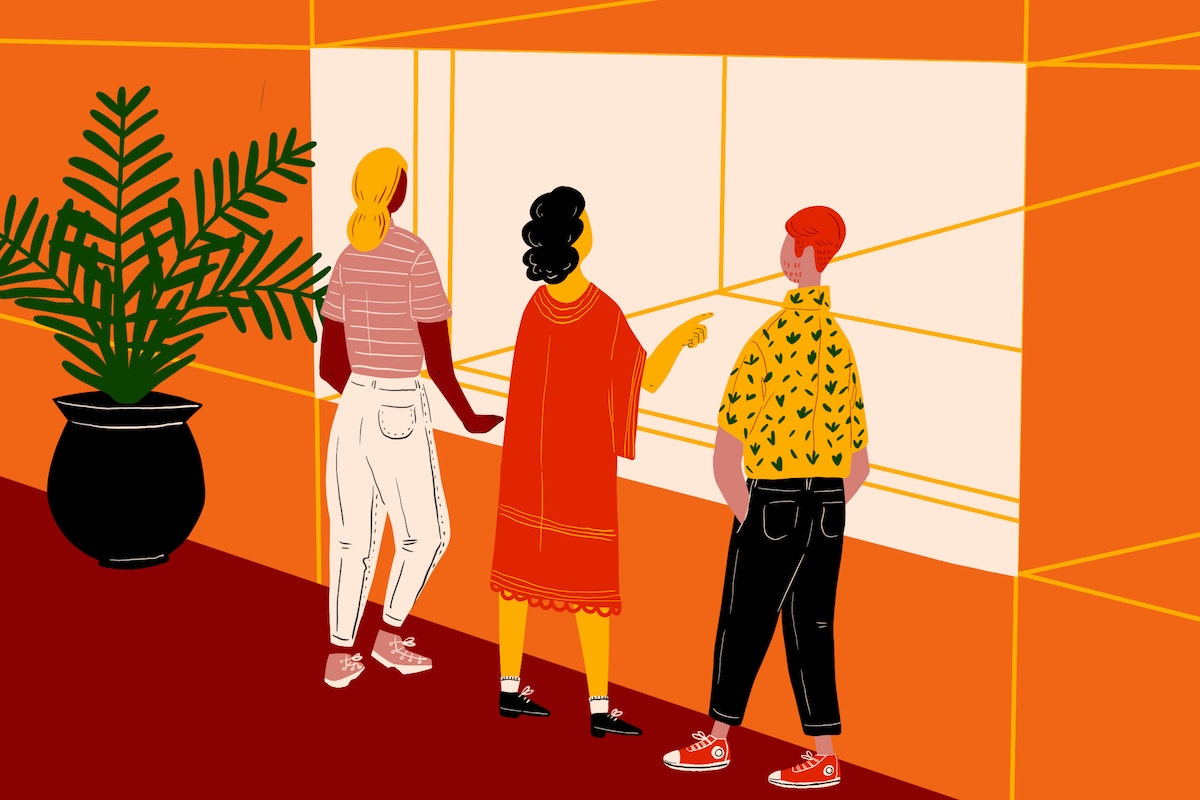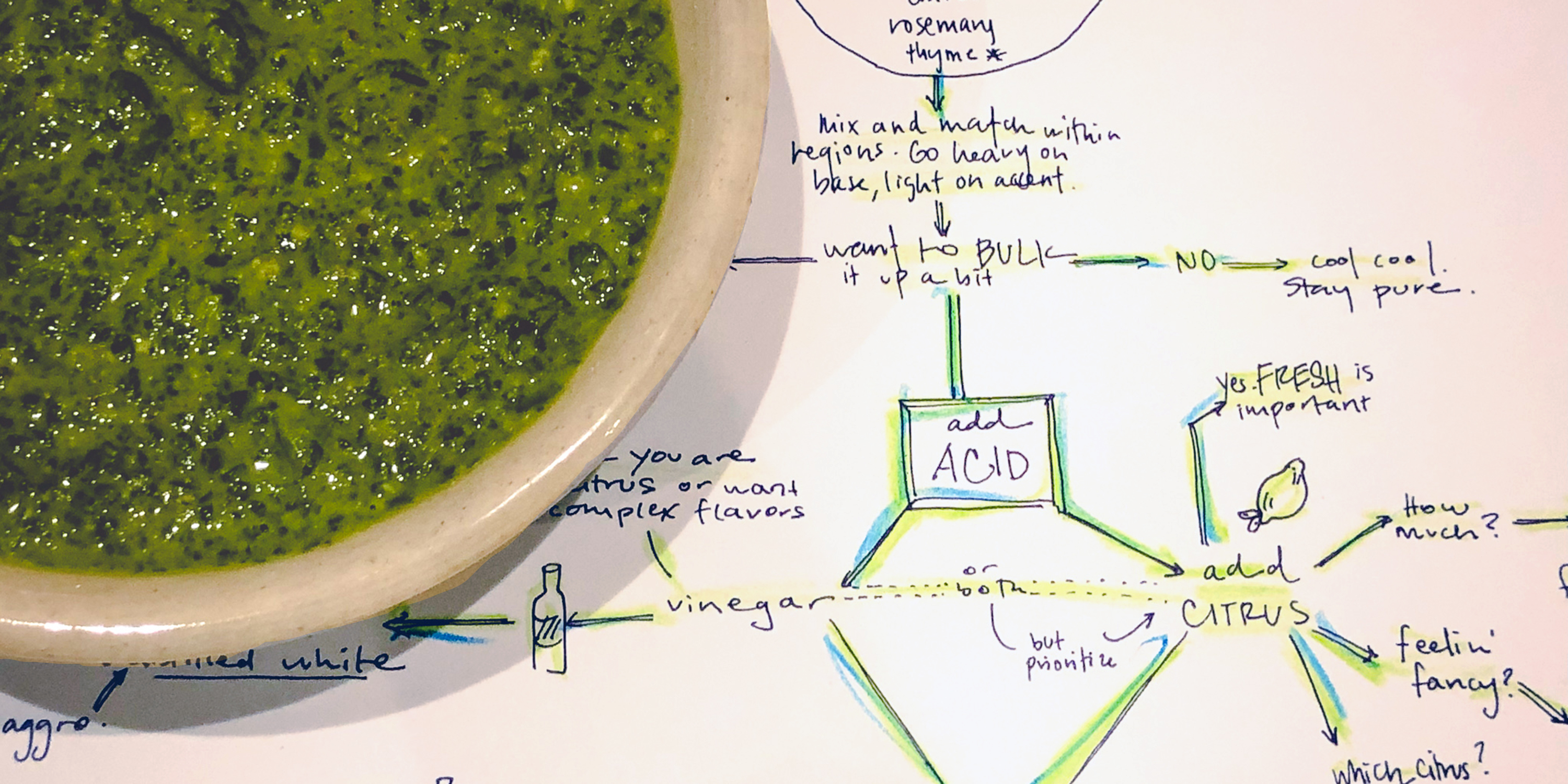4 Reasons Warm-Ups Will Fundamentally Change Your Work

Imagine yourself at a conference, team-building event, or bar mitzvah. The person at the front of the room claps their hands gleefully and announces they’re going to lead an icebreaker.
Did you just cringe? Perhaps your nostrils flared in suspicion. I’m at the far end of the extroverted spectrum and even I have on that grimace.
I’m here to talk to you about creative warm-ups, and to once and for all distinguish them from their brash, single-toned—that tone being forced, high-energy social interaction—cousin: the dreaded icebreaker.
But first, a brief interlude for sports. If you have played or watched any sport on the planet, you know that athletes do not run straight onto the field, into the pool, or out on the court. (If they did that, their game would be garbage and they'd likely pull a hammy.)
Athletes always warm up, and I’d argue that if you were to take one thing from the world of sports to use in your everyday work, it’s this: warm-ups are the thing that can radically change your game.
But if they’re not uncomfortable team cheers or cringe-worthy partner games, what are they?
Warm-ups are a critical part of the collaborative design process. They're a strategic way to set individuals, the team, and the work up for success. And if you do them consistently, you'll build your team’s awareness muscles. You'll become more self-reflective, tuned-in, empathetic, and intentional about the work you are setting out to do.
Here are 4 reasons I believe every collaborative work session needs one.
1. They build psychological safety
Warm-ups can create space to show our humanity. Instead of diving straight into the work, take three minutes to go around the room and check-in with the question: “On a scale of 1-5, how is everyone doing today?” In doing this, we acknowledge that we are not business-people-robots, but are instead complex humans with emotions. Moments of vulnerability help build a foundation of trust, especially when modeled by those with seniority.

Though it may seem trivial, asking people to start off a session by sketching, then sharing a place they loved to play as a child invites everyone to put their voice into the room in a way untethered to expertise or authority. A first contribution is often the hardest, particularly for people farther down the power hierarchy. If you actually want everyone there to collaborate, create a safe invitation for them to participate.
Small moments where you make space for people to bring their real and unique selves to work add up. They build a sense of safety that will allow your team to take risks, challenge the status quo, and propose new ideas.
2. They help you get into the specific mindset the work needs
Ever had someone walk into your meeting in a crappy mood and subsequently prevent your entire team from getting down to business? Everyone is coming from someplace different, whether that’s a stressful one-on-one, a heads-down working session, or a two-hour European lunch.
Take the time to design a transition into the new mindset your work requires. It could be as simple as giving people two minutes to write the to-do list that’s clogging up their brainspace, then putting those Post-its outside the room. Mode switching is hard!

Don't forget to consider not just where people are coming from, but where you want them to go to. The mental place your team needs to be in for a synthesis session (perhaps pattern-finding or decision-making) is totally different than for an ideation jam (maybe pattern-breaking or generating). Think critically about what specific mindsets the work you are embarking on needs.
If you need folks to compromise and build together, have everyone draw an ambiguous squiggle on a Post-it, then pass their drawing to the right; turn that new squiggle into something, then pass each squiggle once more; and have the final person give the squiggle a provocative title and share it with the group.
Getting the right muscles firing up front will grease the gears, and you’ll find your team will be able to go farther faster.
3. They help you practice critical skills
Warm-ups are also a means for you to tangibly grow the core skills you need for your work. When you start a meeting with a three-minute brainstorm on the slimiest, bumpiest, or most laughter-inducing things you can think of, you’re creating a place for people to practice diverging in a low-risk way. If you try having everyone stand at the same spot at the window, each pointing out something they have never noticed before, you’re having them flex the skill of looking at something familiar with fresh eyes.

Working on these skills in a context not tethered directly to business outcomes builds creative confidence. It makes space for folks to grow through trying, flailing, or failing without pressure. When the time comes for them to apply these skills to the work at hand, they will have already built the muscle memory.
4. There's power in starting from a shared experience
The start of a meeting is mission-critical. As an experience designer, I know that it’s impossible (and not actually worth it) to design every moment to perfection. Rather, I focus on the few that really matter, like the beginning.
A warm-up is a way for your team to all start on the same page. If you set off on the wrong foot—or don’t set off at all, leaving everyone wandering whatever alternate plane they were on before your meeting started—you’re not going to get far.

This is especially true for a team where there is currently tension. Designing a human moment that everyone can share will help people start the work at hand with a common understanding. Having each person describe one thing that brought them joy this week can shift the dynamic and set the team up to think collaboratively rather than combatively.
Warm-ups are a breath—a moment to pause in days spent running continuously from list to thing to email. They help us create the necessary space to check-in with ourselves and each other, leave the unnecessary outside the door, and invite in the things we actually want.
Can warm-ups really do all these things? Yes, they can. But they're not a one-size-fits-all solution. You have to be intentional in how you use them.
Let's go back to sports. What can we learn? You have to warm up slowly—jog before you sprint. You have to warm up specific muscle groups—shot putters and synchronized swimmers don’t warm up the same way. And lastly, you warm up together as a team.
When you make it a ritual that every meeting starts with a warm-up, your team will come to expect one, start to feel like they need one, and eventually take shared ownership in leading them. All because they have built the habit of asking what they, as individuals and a collective, need in order to shine.
Stay tuned for upcoming blog posts on warm-ups for all your needs (like when anxieties are high, the 3pm slump hits, your team needs a laugh, or you are diving into convergence).
Words and art


Subscribe

.svg)









